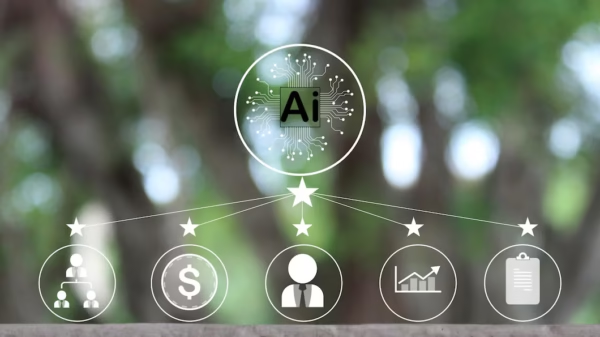Understanding AI’s Energy Footprint
The rapid advancement of artificial intelligence (AI) technologies has ushered in a transformative era across various sectors, yet this progress comes with pronounced energy demands, particularly within data centers. The exponential growth in the complexity of AI models necessitates substantial computational resources, significantly impacting the overall energy consumption of these facilities. At the heart of this transformation lie powerful Graphics Processing Units (GPUs) and Tensor Processing Units (TPUs), which are integral for training and deploying AI systems. These specialized processors are designed to handle the massive parallel computations required for processing vast datasets, thereby contributing to substantial energy usage.
Training sophisticated AI models involves using large datasets, which can span terabytes in size. As AI models continue to evolve, with architectures such as deep neural networks pushing the boundaries of complexity, the computational effort required increases proportionately. For instance, the training of large models like OpenAI’s GPT-3 can consume numerous kilowatt-hours (kWh), evidencing how data centers dedicated to AI processing demand a significant portion of energy resources. In fact, a study revealed that the energy used in training a single AI model can be equivalent to the lifetime energy consumption of several homes, emphasizing the staggering implications of AI’s energy footprint.
Moreover, the deployment of AI solutions further escalates energy consumption due to the need for real-time processing and inference tasks. Every query often necessitates rapid computation from data centers, resulting in continuous energy use. As organizations increasingly adopt AI for applications ranging from natural language processing to image recognition, understanding and addressing these energy demands becomes crucial not only for operational efficiency but also for sustainability efforts. The energy challenges posed by AI highlight the urgent need for optimizing computational strategies and investing in renewable energy sources to mitigate the environmental impact associated with these powerful technologies.
Challenges Faced by Data Centers
As the demand for artificial intelligence (AI) rises, data centers are confronted with numerous challenges primarily stemming from increased energy consumption. The infrastructure limitations present a significant hurdle; many existing data centers were not designed to support the high densities of computing required for AI tasks. As these facilities strive to accommodate additional hardware, upgrades can become costly and complex. Moreover, the inherent scalability limitations of traditional systems often hinder the optimal deployment of AI technologies.
Cooling requirements also pose a critical challenge. The extensive processing power necessitated by AI workloads generates substantial heat. Consequently, data centers need advanced cooling solutions to prevent overheating, which further elevates energy demands. Standard cooling methods may struggle to maintain the required temperature levels, leading to increased operational costs and operational inefficiencies. The ever-growing need for energy-efficient cooling systems has become imperative to ensure the sustainability of AI undertakings in these facilities.
Additionally, the environmental impact of excessive energy consumption has garnered attention from regulatory bodies and the public alike. With increasing scrutiny over carbon footprints, data centers face pressure to improve their energy efficiency. Regulatory frameworks may compel these centers to adopt eco-friendly practices, which can sometimes conflict with the demands of expanding AI workloads. Compliance with such regulations not only adds financial burdens but also necessitates investments in new technologies and practices.
From an economic perspective, while the integration of AI promises significant benefits, the costs associated with sustaining energy-efficient operations can be daunting. Balancing the economic implications with technological advancements requires a delicate approach, often requiring data centers to revise their operational strategies. Case studies illustrating these challenges can provide further insights into how these facilities navigate the complexities of rising energy demands while striving for sustainability in their operations.
Innovative Solutions for Energy Efficiency
The escalating energy demands of artificial intelligence (AI) within data centers necessitate the adoption of innovative solutions aimed at enhancing energy efficiency. Advances in hardware technology play a crucial role in mitigating energy consumption. For instance, the development of energy-efficient processors has emerged as a game-changer in reducing the power requirements during intensive AI workloads. These processors are designed to deliver maximum performance while consuming minimal energy, making them ideal for data centers that prioritize energy efficiency.
Additionally, cooling systems have seen significant advancements. Traditional cooling methods often incur high energy costs; however, innovations such as liquid cooling and advanced airflow management techniques have successfully minimized the energy footprint of maintaining optimal operating temperatures in data centers. These technologies not only enhance the lifespan of hardware but also drastically reduce the amount of energy consumed.
Furthermore, software optimization techniques contribute significantly to energy efficiency. AI models often require substantial computational resources during training and inference. By integrating optimization algorithms and intelligent resource allocation strategies, data centers can minimize the overall energy consumption associated with these processes. Techniques such as dynamic workload allocation and power-aware scheduling enable the efficient use of computing resources, ensuring that energy is utilized only when necessary.
Cloud computing and virtualization also play a pivotal role in enhancing energy efficiency. By leveraging these technologies, organizations can optimize resource allocation and scaling capabilities, leading to improved overall performance with minimal energy usage. Virtualization allows multiple workloads to operate on a single physical server, reducing waste and enhancing energy management perceptively.
Key examples include initiatives from companies like Google and Microsoft, who have implemented pioneering energy-efficient initiatives within their data centers, demonstrating the feasibility and effectiveness of these innovative solutions. By prioritizing energy efficiency, these organizations not only serve their operational needs but also address the broader environmental impact associated with data center operations.
The Future of AI and Sustainable Energy Practices
The integration of artificial intelligence (AI) with sustainable energy practices is poised to shape the future of data centers significantly. As demand for AI applications continues to surge, the energy consumption associated with these technologies grows correspondingly. To address this challenge, an innovative approach that combines AI with renewable energy sources is essential. The adoption of solar, wind, and other clean energy solutions is becoming increasingly prominent in the data center sector, facilitating a transition toward more sustainable operations.
Emerging trends show that data centers are beginning to implement advanced energy management systems that optimize electricity use by incorporating AI-driven analytics. These systems can predict energy requirements based on AI workload patterns, resulting in a more efficient allocation of energy resources. Moreover, machine learning algorithms can assist in finding cleaner energy sources for operation, allowing businesses to reduce their carbon footprints while meeting the needs of artificial intelligence applications.
Collaboration between industry leaders, policymakers, and researchers is crucial in establishing frameworks to encourage sustainable practices. Initiatives that promote the use of green technologies, alongside stringent guidelines and incentives, can facilitate broader adoption of renewable energy solutions in data centers. Additionally, industry stakeholders are increasingly recognizing the importance of investing in carbon offset programs to create a balanced carbon footprint despite growing power demands.
Insights from influential figures in the tech industry emphasize a commitment to sustainability alongside AI innovation. By fostering partnerships that prioritize eco-friendly practices, the future of data centers can achieve a harmonious balance between enhancing AI capabilities and maintaining environmental responsibility. As we navigate these pathways, it will be vital to ensure that the exponential growth of AI does not come at the expense of our planet’s health, paving the way for a sustainable future in technology.



















